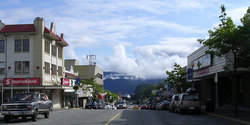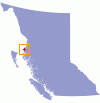
The groupings of Northwest Coast first nation’s arts throughout the community’s galleries, shops, totem park and historic exploration tours are distinct with the rich traditions presented by the over seven different nations that have lived in the area for over 10,000 years.
Journeys throughout Prince Rupert open exciting wilderness opportunities to discover mysterious petroglyphs, ancient village sites, tours by kayak and well maintained rainforest trails. Inside, an original “experience” conducted by the Museum, hosts a theatre of dance story telling, which also includes a feast of indigenous foods.
Charters make fishing a perfect start to the day. The rivers and lakes that surround Prince Rupert are accessible by highway and create fantastic camping sites for travelers with recreational vehicles.
Highlights:
Prince Rupert Fire Museum
Skeena River Salmon Fishing
North Pacific Cannery Village Museum
Museum of Northern BC - Carving Shed allows visitors to experience culture; arts, carving, dance, ancient drama and song.
Acropolis Hill now known as Roosevelt Park - highest vantage point
Visual and Preforming Arts
Inside Passage
Sport Fishing
Heritage Buildings
History:
The Tsimshian First Nation inhabited the area in and around Prince Rupert (as we know it today) for over 5,000 years. Their livelihood stemmed from utilizing the cedar trees for shelter, canoes, material and tall totem poles marking celebrations and their home (which you can still see today). Many other First Nations people's land boarded on Prince Rupert including; the Gitxsan, Nisga'a, Haida and Heiltsuk.
By 1906, the Grand Trunk Pacific Railway, constructed a terminal in the tent town and it required a name. "Prince Rupert" was a cousin of Charles II of England and the name was entered in the GTPR's contest by Eleanor MacDonald of Winnipeg. The city was incorporated in 1910 and would become a significant seaport for fishing and timber for both Canada and the United States.
Climate:
Summer average 18 degrees Celsius
Winter average 3 degrees Celsius
Prince Rupert Accommodations
Prince Rupert Things to Do
British Columbia

